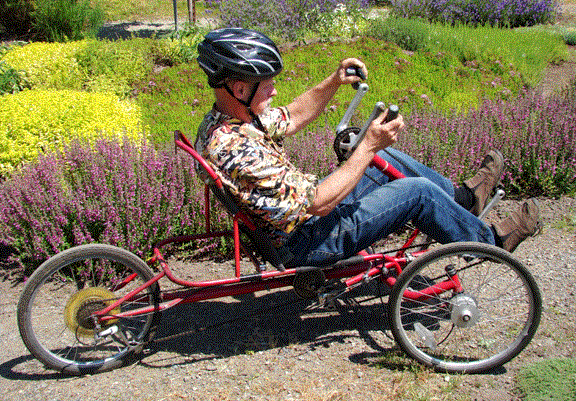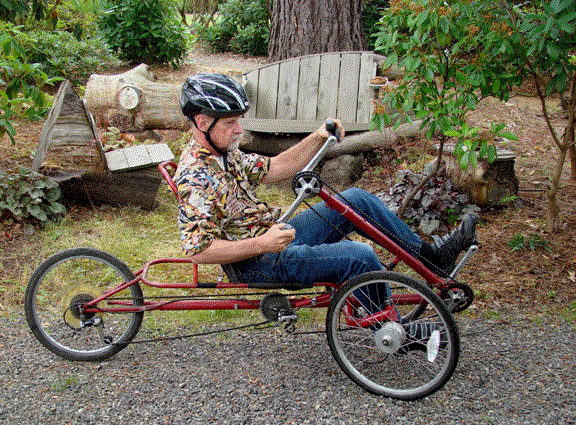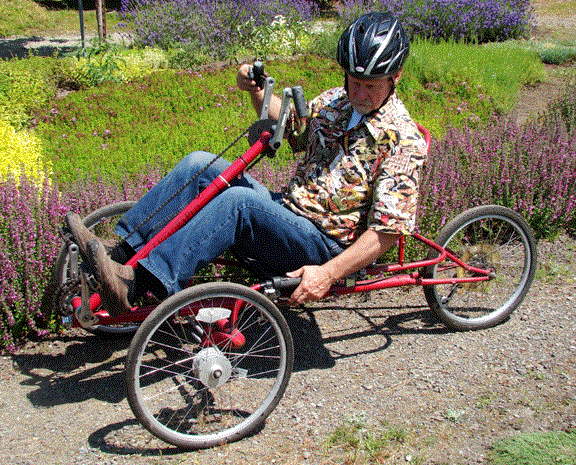 |
This is a quadaped trike, as opposed to a trike modified into a quad, which has four wheels (and as opposed to a quarduped, which is an animal with four legs.) A quadraped has four cranks, two for feet and two for hands. The quadraped was originally built by designer Gary Hale for people with disabilities. Each was custom made to the client's specifications. He fabricated one for a triple amputee. Subsequent versions were intended for typically able riders who wanted and upper as well as lower body workout in their trike ride. When I bought the quadraped, the cranks were all aligned together (left) rather than alternating left and right (below). The first is better for a full body workout; the second for typical cruising. |





